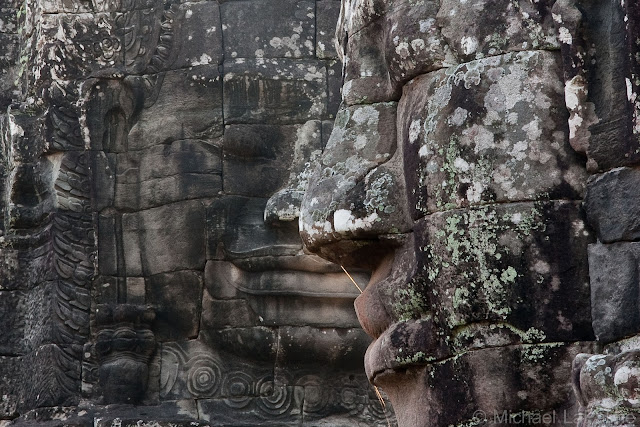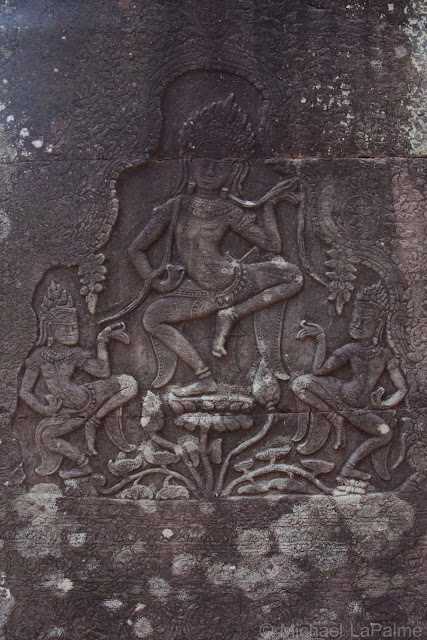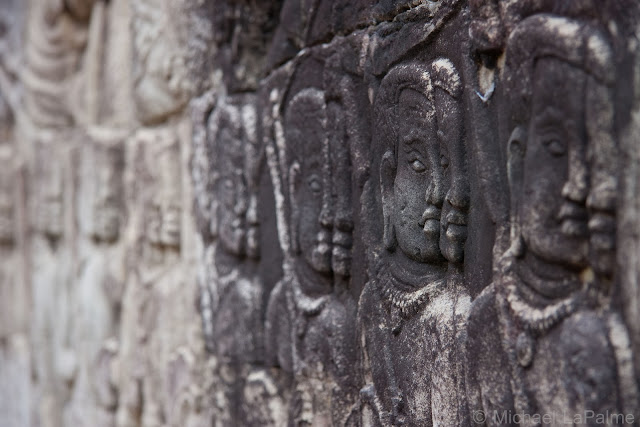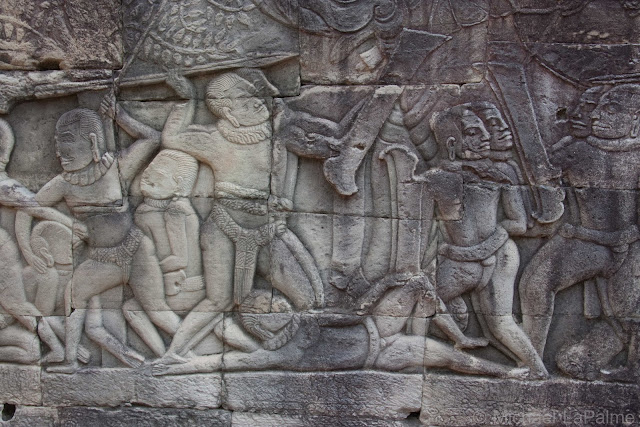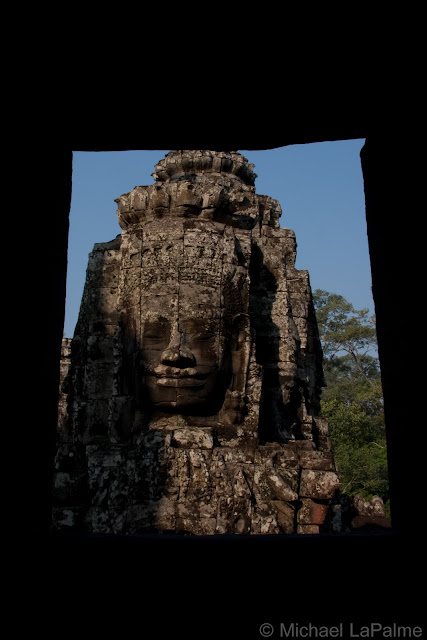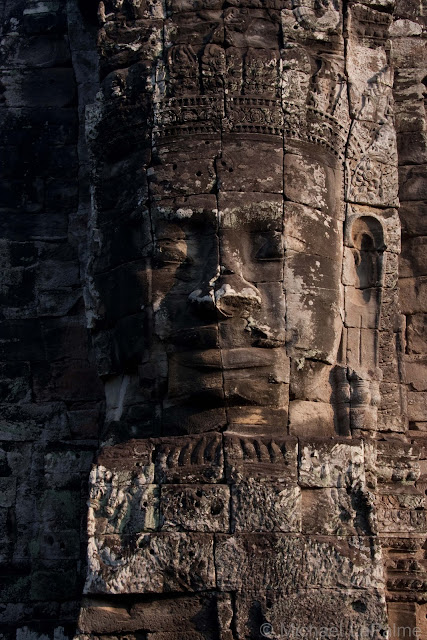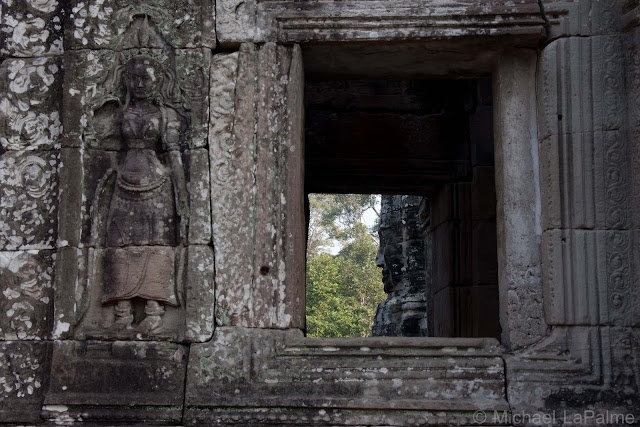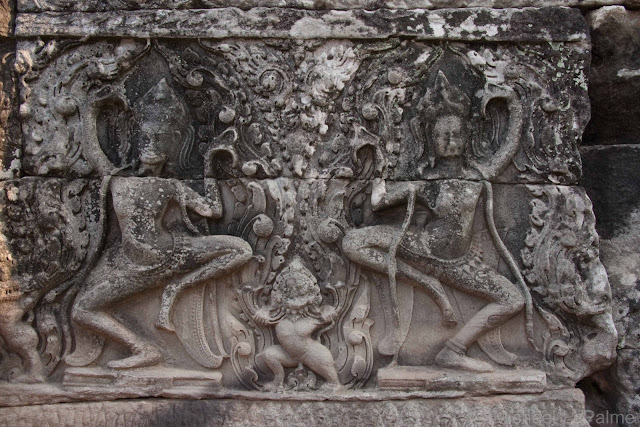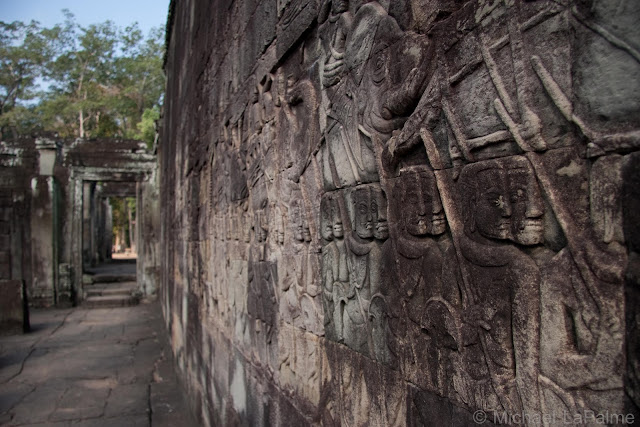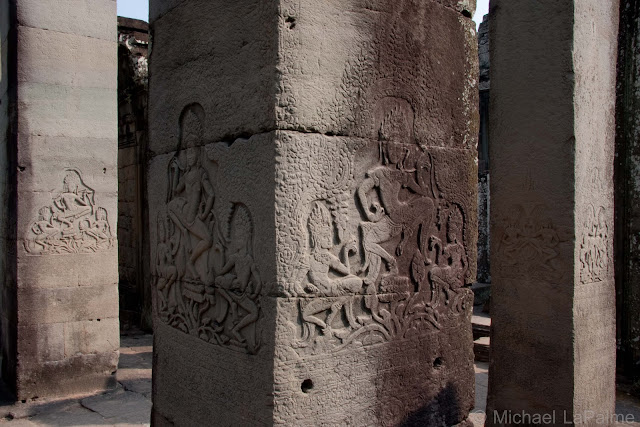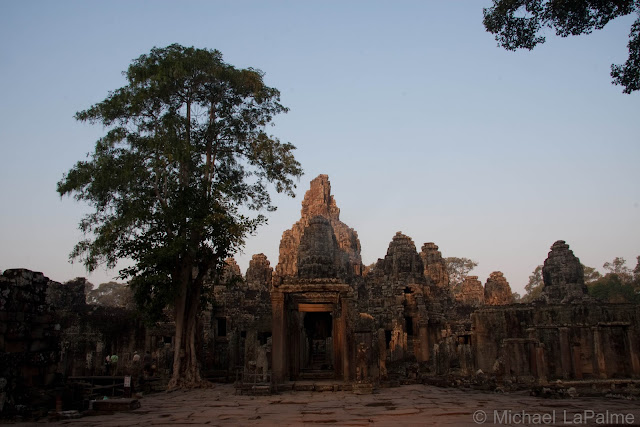The annual Wai Khru Ceremony (Tattoo Festival)
พิธีไหว้ครูหลวงพ่อเปิ่น(วัดบางพระ) วันเสาร์ที่ 23 มีนาคม 2556
เวลา 9.39 นาที ณ วัดบางพระ ต.บางแก้วฟ้า
อ.นครชัยศรี จ.นครปฐม
พิธีไหว้ครูหลวงพ่อเปิ่น(วัดบางพระ) วันเสาร์ที่ 23 มีนาคม 2556
เวลา 9.39 นาที ณ วัดบางพระ ต.บางแก้วฟ้า
อ.นครชัยศรี จ.นครปฐม
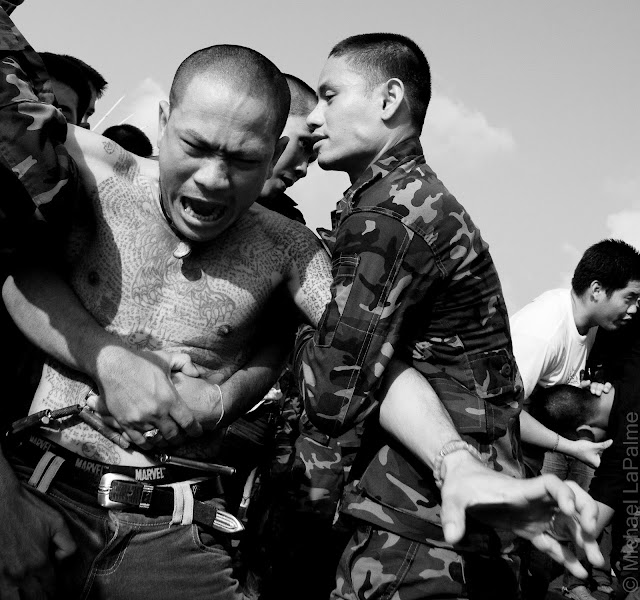 |
| พิธีไหว้ครูหลวงพ่อเปิ่น(วัดบางพระ) |
The Blessing & Resuscitation of the Yantra Tattoos
Wat Bang Pra (วัดบางพระ) is a Buddhist temple located on the banks of the Nakorn Chaisi river in Nakom Pathom, Thailand. The temple is famous for its monks and their practice of giving "Sak Yant" tattoos with wooden bamboo needless. Many believe that protective energy flows through these types of tattoos, keeping them safe from harm. It is not simply about getting a talisman tattoo here. The owner must activate it in order for it to serve as a lifesaving conduit.The owner must respect the precepts set by the head master. Devotees return here annually to recharge their tattoos and the experience is quite exhilarating to witness.
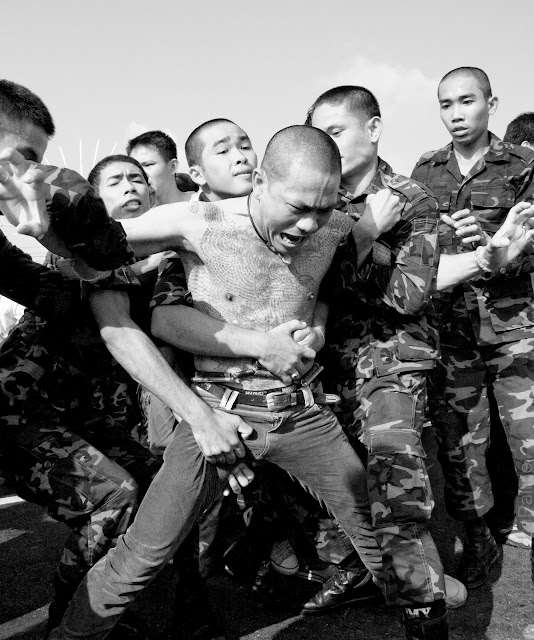
The "Wai Khru Ceremony" or "tattoo festival" (for non thai language speakers) is held on the temple grounds annually around the first Saturday in March. The exact dates are announced after the monks decide upon the most auspicious time. The trip from Bangkok takes around 45 minutes by car, longer if you take public transportation.
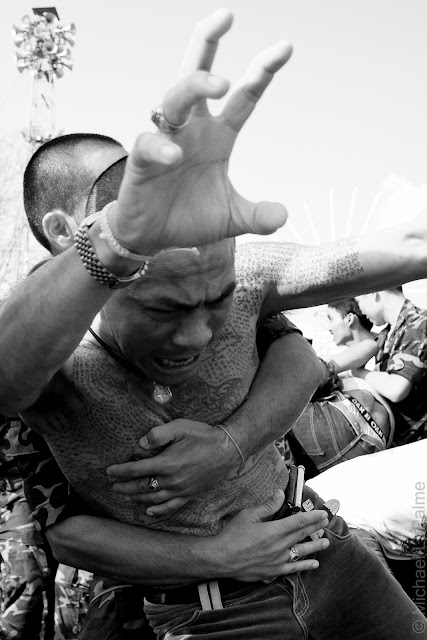
There are many other "Sak Yant สักยันต์" tattoo masters in Thailand but Wat Bang Phra is by far the most famous and has probably contributed more to the fame of the "Sak Yant สักยันต์" tattoo than any other temple in Thailand.
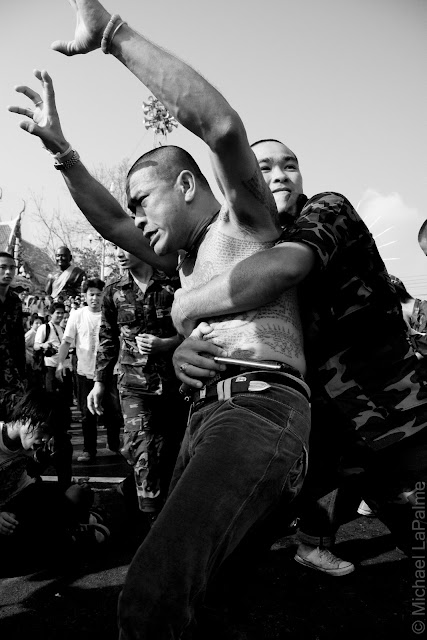
People begin to arrive in the thousands the evening before the event. The following day during the morning ceremony the tattoos are blessed and their power recharged with new energy and magic which they believe protects them from danger and evil.
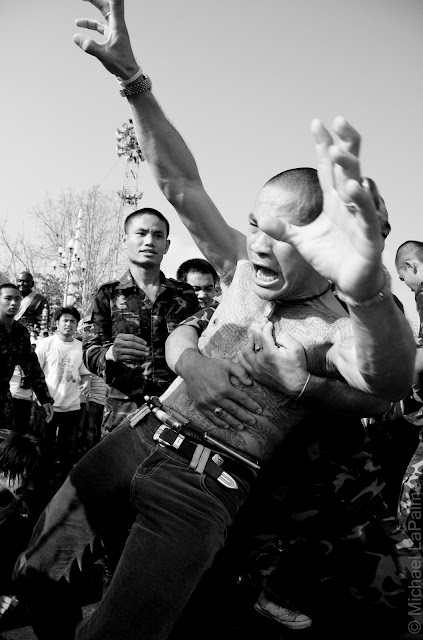
They sit and meditate in the large open parking lot inside the front section of the temple while listening to the prayers and chanting from the monks on the main stage.
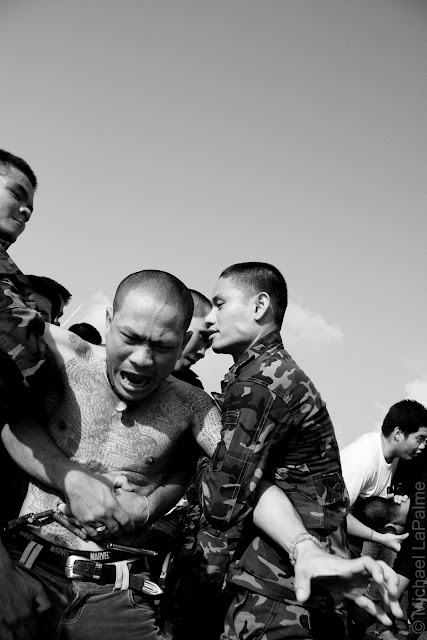
At the pinnacle moment when the recharging has completed, some of the devotee transform themselves into animals, imitating them to the best of their ability.
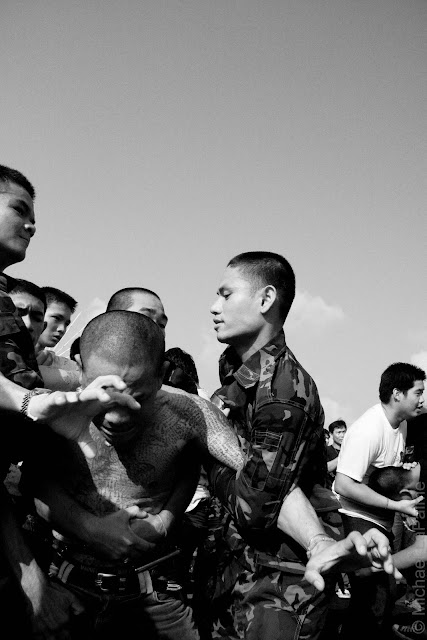
Sounds of monkeys, dogs, elephants, crocodiles, screams and maniacal laughing can be heard across the temple compound.

They run, crawl and slither on the grounds of the temple's parking lot. Most run towards the main stage at full speed where the monks are chanting.
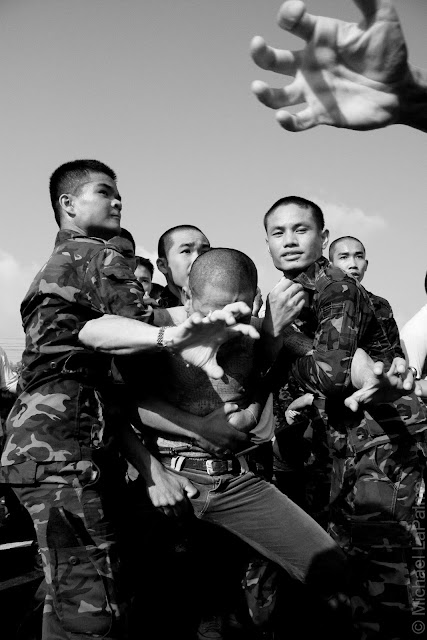
Not everyone is graceful, many stumble and fall into the crowds hurting themselves and other people. Everyone seems to be screaming, praying or both. It is madness. This lasts for a couple of hours. When things take off they happen really fast. The experience is really quite fascinating.

Security is usually provide by soldiers, body snatchers and / or other civic groups of volunteers whose main goal is to catch and calm the possessed devotees. Rubbing the ears calms the possessed and they snap back into reality, slowly walking back to their seats and starting the entire process over again.

They scan the rows trying to figure out where the next assault will come from next. Sometimes it comes one at a time and others in large groups. You can tell by their expressions that this is extremely strenuous and taxing work. The best places for photographs are unfortunately also the most dangerous. You can sit among the people praying, in front of the main stage or off to one of the sides.
| งานพิธีไหว้ครู วัดบางพระ © 2009 Michael LaPalme |
For those people interested in getting a tattoo at the temple there are some additional instructions on the steps involved once you arrive here.
For those interested in the topic of Yantra tattoos สักยันต์, the following books are highly recommended:
- Sacred Skin: Thailand's Spirit Tattoos
- Tom Vater and Aroon Thaewchatturat
- Sacred Tattoos of Thailand: Exploring the Magic, Masters and Mystery of Sak Yan
- Joe Cummings and Dan White
Phra Udomprachanat (Luang Por Phern)
Wat Bang Phra, Tambol Ban Gaew Fa
Amphor Nakornchaisri, Nakornpathom
In Thai to print for Taxi driver:
วัดบางพระ (วัดหลวงพ่อเปิ่น)
ต.บางแก้วฟ้า, อ.นครชัยศรี, จ.นครปฐม
GPS Coordinates are N 13 53.846 E 100 12.773
Tel: +66(0)34389333
View Larger Map
